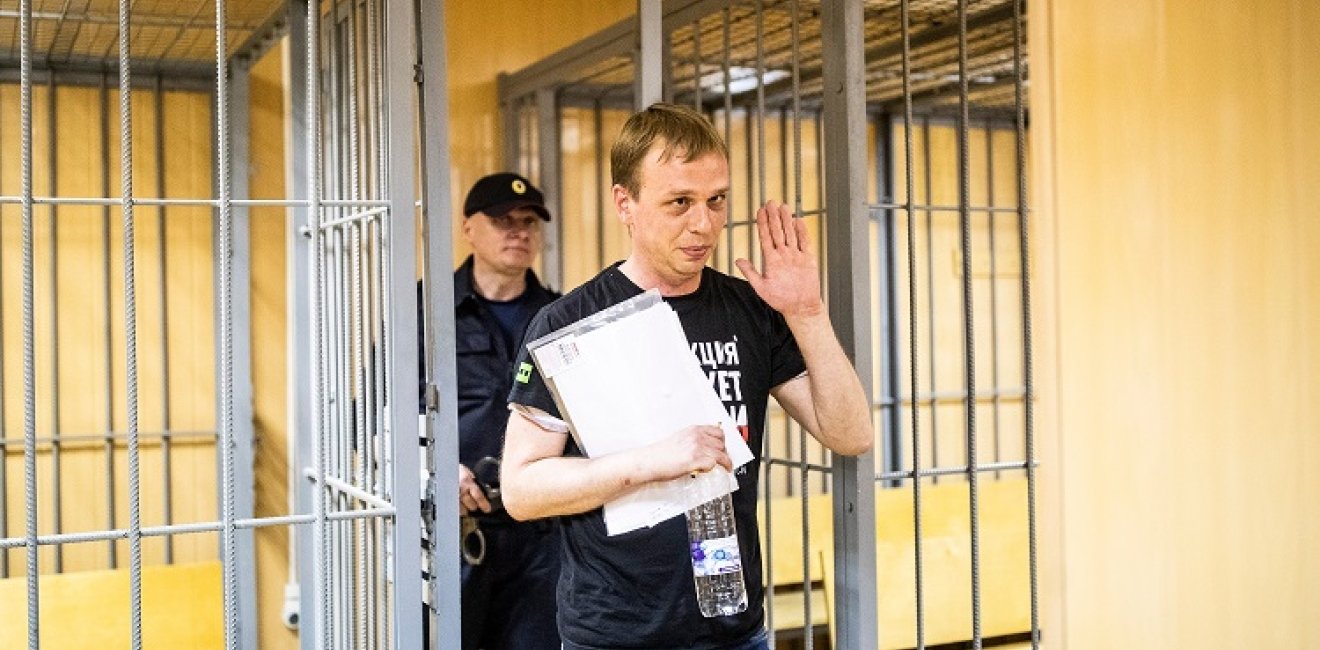
A blog of the Kennan Institute

The June 11 termination of the criminal case against journalist Ivan Golunov, who had been detained on trumped-up drug charges, marked a triumph of civil resistance and professional journalists’ solidarity. Immediately after Golunov’s liberation, however, a split occurred among his supporters, who had just stood together, united in his defense. Moscow’s civil activists had to decide whether to participate in a peaceful but unauthorized march initiated by eleven well-known Russian journalists, including Ilya Azar and Evgeniy Berg, or to attend a meeting in Sakharov Square that was sanctioned by the Moscow city authorities. The meeting had been organized by the chairman of the Moscow Union of Journalists, editor of the newspaper Moskovsky Komsomolets Pavel Gusev, chairman of the Union of Journalists of Russia Vladimir Soloviev, and editor of the RT TV channel Ekaterina Vinokurova. Underlying the protestors’ agonizing decision was a careful political calculation by the Kremlin to control and defang protests.
The activists who had initiated the march called on Golunov’s supporters to boycott the Sakharov Square meeting, accusing its organizers of “intercepting the agenda” and “imitating a response to sincere popular indignation.” Others, especially the organizers of the sanctioned meeting, stood up for a legal protest that would allow citizens to express their demands and grievances without violating the law. These arguments were divisive as they raised a moral dilemma for those who wanted to participate in a rally in support of Golunov but found themselves having to choose between two types of protest with essentially the same agenda. One protest involved an unsanctioned and therefore risky march that was definitely not connected to the regime, while the other demonstration involved a regime-sanctioned meeting, participation in which might suggest collaboration.
Unsurprisingly, the unauthorized march was brutally dispersed by the police, with more than 500 participants arrested, while the sanctioned meeting, which attracted far fewer people than had been expected by the organizers (between 300 (Meduza) and 1,600 (Ministry of Internal Affairs)) went off without disruption.
The protests over Golunov’s case are over. The dilemma over participating in one or the other type of protest will persist, as it is rooted in the nature of Russia’s hybrid regime, which allows both types of protest to coexist. And this situation in turn plays into the hand of the regime: a classic strategy of divide and conquer, it divides and ultimately weakens the opposition.
Scholars of contentious politics have long noticed a correlation between patterns of popular protest and the type of political regime. In advanced democracies, protest actions are usually organized. Peaceful gatherings and demonstrations serve as an institutionalized mechanism of public interest representation. Organized democratic protests are not aimed at overthrowing political regimes but rather at drawing attention to the acute problems faced by certain social groups and society.
In contrast to democratic systems, in closed autocracies organized public protests are outlawed, and therefore must be spontaneous and discrete. Unlike peaceful collective actions in democracies, protests in authoritarian societies often assume violent forms and challenge political regimes directly. And whereas in democracies, open expression of discontent is the norm, participation in protests in authoritarian countries is dangerous and resorted to by the population only when all other means of contention have been exhausted.
In hybrid political regimes like Russia’s, which combines a democratic design with authoritarian control, the protest patterns are mixed (Robertson 2010): legal, organized rallies exist side-by-side with spontaneous outbreaks of unauthorized expressions of discontent. The multiple protest options that emerged after Golunov’s arrest perfectly illustrate this phenomenon.
The public protest dilemma remains an entrenched feature of hybrid regimes because organized legal protests can be used by the authorities to manipulate and channel popular discontent. If protests are expected, the Kremlin would prefer to sanction democratically organized protest action rather than wait for spontaneous popular actions that might blow up into an unpredictable mass rebellion. The governing and political institutions—theoretically the addressees of organized protests—are controlled by the Kremlin and are more susceptible to instructions “from above” than to demands “from below.” The best example here is the response to the recent pension reform in the summer of 2018, when the State Duma adopted the Kremlin’s decision to raise the pension age despite wide-scale public protests. Civic groups leading organized protests are also dependent on the state. They must make sure that public grievances do not grow into political demands, which the Kremlin fears the most. This does not mean, however, that these organizations are necessarily colluding with the Kremlin. They might sincerely seek to avoid the violence and disruption associated with political protests—which suits the authorities quite well.
As the case of Ivan Golunov showed, civilian resistance can have an impact on the regime, but only when protesters present a united front. The public protest dilemma creates a rift among the Russian civil activist community, diluting its unity. The dilemma of the protest is rooted in the very essence of the hybrid regime and will continue as long as the latter exists. So long as civilian forces expend energy fighting among themselves, the regime wins.
Author
Founder and Executive Director, Center for Independent Social Research in the USA (CISRus)
Explore More in The Russia File
Browse The Russia File
Chechnya as a Model of Modern Russia

Russia’s Indigenous Communities and the War in Ukraine

Gas and Power in a Changing US–Russia Relationship
